HSOG History, Chapter 10: the High School through the World Wars
With Remembrance Sunday having taken place this past weekend, we thought it poignant that November’s instalment of HSOG History should focus on the periods during the 20th century when the two World Wars took place.
As people across the world took the time to remember the service and sacrifice of all those that have defended our freedoms and protected our way of life, we will explore what life at the High School was like during the World Wars, shine a spotlight on some of our former pupils who so bravely gave their lives for their country and how the High School remembers them today.
Pictured above: four High School former pupils, two of whom served during the First World War and another two who served during the Second World War. Top row L-R: David Alexander Anderson (Junior) (1913-1940) and David Alexander Anderson (Senior) (1886-1917). Bottom row L-R: George Muir Warnock (1893-1918) and Richard Macfarlane (1921-1943).
Life at the High School during the war years
With the outbreak of the First World War on 28th July 1914, life changed drastically for people throughout the United Kingdom.
Schools across the country came together to aid the war effort. During the first year of the conflict, pupils at the Glasgow High School for Girls knitted 1000 articles of clothing during their spare time for those fighting on the front lines.
That same year, instead of being awarded prizes, pupils at the girls’ school lobbied for these to be changed to certificates to save money to maintain a bed in the Scottish Military Hospital in Glasgow. Meanwhile, school staff maintained a bed in the Scottish Hospital in Rouen in Normandy, France.
Our former Elmbank Street boys’ school was also mobilising its pupils and staff in support of the war effort. On 29th January 1915, a concert was held in aid of the War Relief Funds in the School Hall, organised by the Officers’ Training Corps. According to an extract from the April 1915 school magazine: ‘The entertainment provided was of the highest order (and)… the programme was sustained by such well-known artists as Misses Agnes Ramage and Margaret M’G Brown’. The concert was a huge success, raising £51 (approximately £4,400 in today’s money) for the Glasgow Herald Branch of the Prince of Wales Fund.
Additionally, on 17th December that same year a Cake and Candy Sale was held as part of a carnival-style event. A myriad of baked goods were available for purchase along with other gifts. A tea room was set up in the Junior School, whilst the Assembly Hall was transformed into a picture house and the Art Rooms a theatre. The fantastic sum of £500 was raised, which is the equivalent of circa £43,100 today.
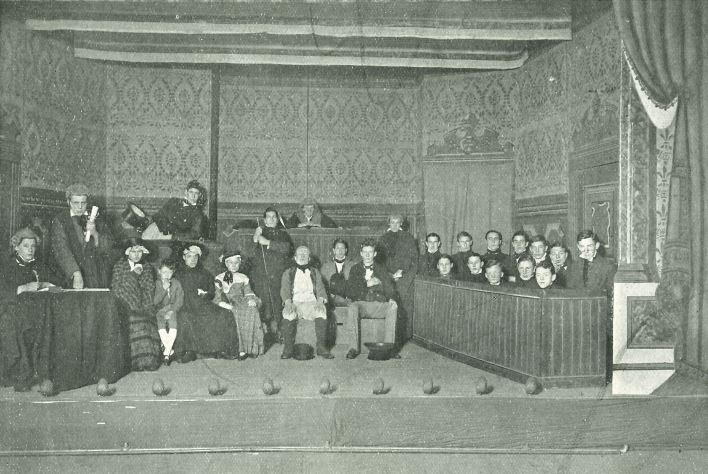
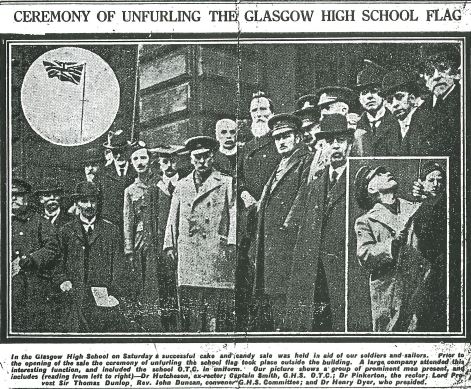
Pictured above left: A performance of Bardell v Pickwick involving pupils from our former boys’ school. The performance was part of the Cake and Candy Sale at Elmbank Street in December 1915 in support of the war effort during WW1.
Pictured above right: A newspaper article from December 1915 detailing coverage of the Cake and Candy Sale that same month.
21 years after the end of WW1, the Second World War broke out on 1st September 1939, meaning schools were formally and compulsorily closed. Again, our pupil and staff bodies rallied together to support those fighting on the front lines.
By 1940, a degree of normality had returned and those pupils who had returned to the Glasgow High School for Girls found themselves assisting the Red Cross by picking sphagnum moss for use in wound dressings. The following year, in March 1941, the Blitz sadly claimed the lives of two High School girls – Kathleen Blake of Fifth Year and Shirley Cameron of Primary 7. After this tragic event, arrangements were made to evacuate pupils to the countryside.
During the preceding years, the girls actively contributed to the war effort in various ways. Concerts were held in tandem with the boys’ school in 1942 and 1943 to raise funds for the Red Cross (culminating in donations of £100 and £150 respectively). Weekly contributions supported the Wool Fund so pupils could knit woollen comforts for merchant seamen. In addition, the parcels also contained books and magazines. The holiday dates were even changed in Glasgow to suit the fruit-picking and harvesting seasons. Where berries were deemed unfit for consumption, they were harvested to be used for making dye for the Forces’ uniforms.
Meanwhile, pupils and staff at the boys’ school jumped at the chance to help the High School reopen, which would only be possible for approved sites with adequate air-raid shelters. And so, they assisted with sandbag protections in 1939, which were so far advanced in just four days that the three highest Forms were able to return to the School.
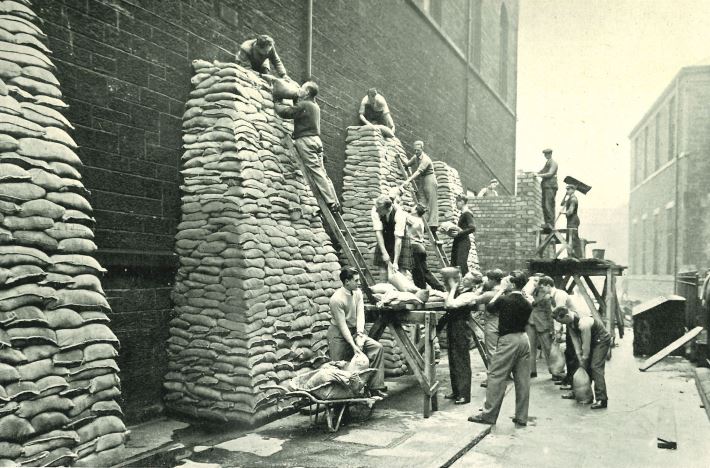
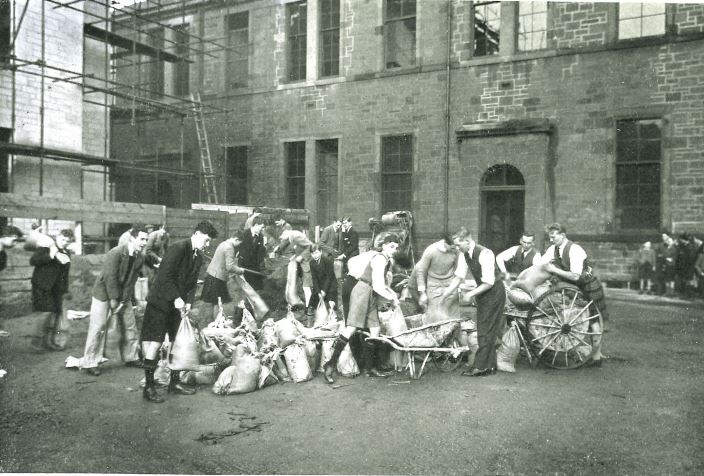
Pictured above: sandbagging efforts of High School pupils at Elmbank Street, October 1939.
A large number of boys also offered their services as volunteer fire-fighters following a request from Rector, John Talman. Those involved were provided with training on handling incendiary bombs, rescue work and entering a smoke-filled room.
During session 1941-42, refugees who had arrived to Glasgow from the island of Spitzbergen, Norway following the German occupation were provided with books, toys and games from pupils at our former boys’ school.
HSOG former pupils on the front lines
Many former pupils served in both wars and here we shine a spotlight on just a small selection whose stories have been studied by our Senior School History pupils or shared as part of the School’s annual Remembrance Service. Their photographs are display at the top of this article, as the cover image.
Lieutenant MBChB David Alexander Anderson (1886-1917)
David was born in Glasgow on 17th January 1886. He attended West Coats’ School in South Lanarkshire before moving to the High School. After studying medicine at the University of Glasgow, he graduated with an MBChB in 1907, thereafter relocating to England to set up a practice in County Durham. In 1911, he married Maggie Todd. Two years later their son, David Alexander Anderson (junior), was born.
Upon the outbreak of the First World War, David joined the Royal Army Medical Corps as an Officer, but it wasn’t until April 1917 that he was sent to France. He served with the 37th Motor Ambulance Convoy whose job was to transport the wounded from the front line to the hospital. By August that same year, he was stationed at a hospital near St Omer (northern France). Sadly, he was admitted to hospital the following month, likely due to illness, and he passed away on 13th September 1917.
His death was reported in the Evening Times four days later and he was buried in Longuenesse (St Omer) Souvenir Cemetry. His gravestone was inscribed with the words “Thy will be done”.
Lieutenant George Muir Warnock (1893-1918)
Born in 1893, George was raised in Glasgow alongside his sister, Daisy, and lived on Westminster Terrace. He attended the High School until 1908 and then began working with a firm of stockbrokers as a clerk.
Like thousands of other young men, George volunteered for the Armed Forces following the start of the First World War. He was assigned to the 6th Argyll and Sutherland Highlanders and sent to France in 1916, where he impressed his superiors with his approach to his work. As a result, he was commissioned as an officer and given responsibility for looking after the battalion’s Lewis machine guns.
George served in many battles during the First World War, including the battles of Arras and Cambrai, both in 1917. The Spring Offensive in 1918 was Germany’s final attempt to win the War but unfortunately, despite it ultimately failing, there were vast numbers of British casualties. George was wounded by a bullet which hit him on his side and entered his right lung.
He was transferred to the 8th General Hospital in Rouen where he underwent surgery to remove the bullet. Sadly, it failed and George passed away on 29th March 1918.
In a letter of condolence sent to George’s parents, William and Mary Warnock, one of George’s officers wrote “[He] was one of the bravest and best boys I ever knew, [He] was most lovable and always had a smile ready no matter what was happening. [He] was my most able and willing assistant in many things when I was Second in Command of the Battalion and I loved him as I did my own son. I have seen your son in battle and never was anyone so keen to do his duty… he was a very gallant and true gentleman.”
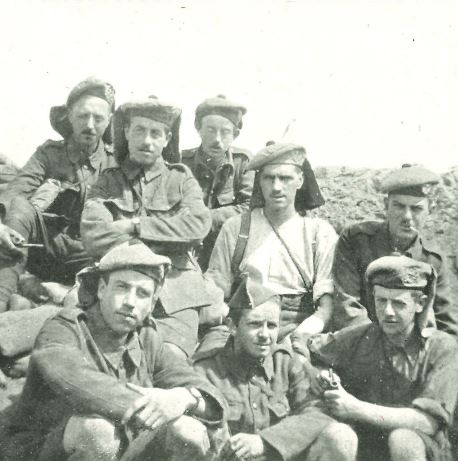
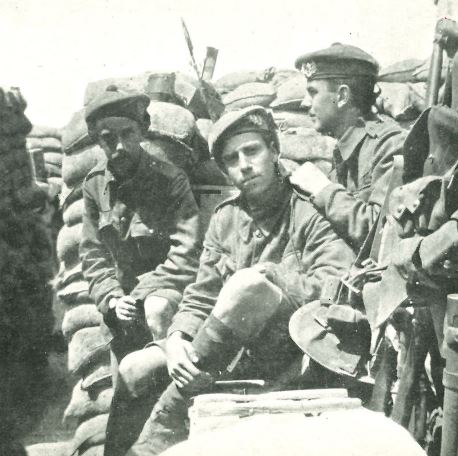
Pictured above, a selection of High School former pupils serving on the front lines in France as part of the 5th Scottish Rifles, date unknown.
Radio Officer David Alexander Anderson (1913-1940)
The son of David Alexander Anderson mentioned above, David moved back to Glasgow with his mother following the conclusion of the First World War and the loss of his father. He attended the High School between 1921 and 1929, working as a salesman at his uncle’s firm thereafter. In April 1939, David married Elizabeth Crosher but the Second World War disrupted their married life just months later.
As a result, David enlisted with the Merchant Navy and was employed by the Marconi Shipping Company as a Radio Officer on the cargo ship, SS JUMNA. On Christmas Day 1940, the ship was bound for India carrying a crew of 64 men and 44 passengers (many of the latter were sailors who had lost their ships to German attacks).
On their journey, the ship encountered a heavily armed German warship, the Admiral Hipper. Known as a surface raider, it would often pretend to be a British ship until it could sail close enough to board and destroy the other vessel. On this occasion, however, SS JUMNA were suspicious when they received a message via flashing lamp from the German warship and began to retreat.
Sadly, the Hipper’s wireless operators were listening on the international distress frequency and heard SS JUMNA begin a transmission. From here, the German warship open fired and within five minutes had sunk the SS JUMNA.
All those onboard lost their lives, including David, whose job it would have been to send out the distress signal.
No Allied ship or shore station reported hearing the doomed ship’s final message and no wreckage was ever found.
Unlike his father who served during the First World War, David has no known grave. Instead, his name is marked on the Memorial for the Merchant Navy at Tower Hill in London.
Flying Officer Richard Macfarlane (1921-1943)
Richard was born on 12th December 1921 and was the eldest son of Daniel and Jessie Macfarlane. After first studying at Hyndland School, he then moved to The High School of Glasgow where he became Dux of the Fourth Form and also one of the top pupils during his Fifth year. In addition to his academic skills, Richard possessed talent on the rugby and cricket pitches. After completing his school career, he went on to study Law with distinction at the University of Glasgow.
A few years into the Second World War, Richard decided to join the Royal Air Force and was sent to the USA in 1941 to train as a Navigator. Initially, he served with the RAF Coastal Command before transferring to Bomber Command. By March 1943, he was sent to the newly formed 617 Squadron to undertake “special duties” encompassing secret and extremely risky activities.
As part of his first mission in May 1943, Richard was required to fly hundreds of miles over hostile territory to use a new weapon – the “bouncing bomb” – to destroy three German dams (the Mohne, the Eder and the Sorpe) to hinder Germany’s war efforts. Shortly before reaching the Dutch coast, the flight engineer in Richard’s Lancaster bomber noticed the altimeter had clocked 0 feet. Thereafter, the crew realised they had struck water and lost their bouncing bomb in the process, and so were forced to turn back. Overall, the mission was deemed a success and those involved in the raid were given leave to return home.
617 Squadron became famous for its skills and was used to attack difficult targets. On 20th December 1943, Richard’s aircraft was involved in a raid on an armaments factory in Liege, Belgium. The plane was damaged by a German night fighter with an order from the pilot to bail out following. Sadly, the pilot was the only surviving crew member with his other crewmates buried in Gosselies Communal Cemetry in Belgium.
Richard’s younger brother was the late Lord Norman Somerville Macfarlane, who many members of our community will be familiar with. Lord Macfarlane also attended the High School, with which he maintained a strong connection until his death in November 2021.
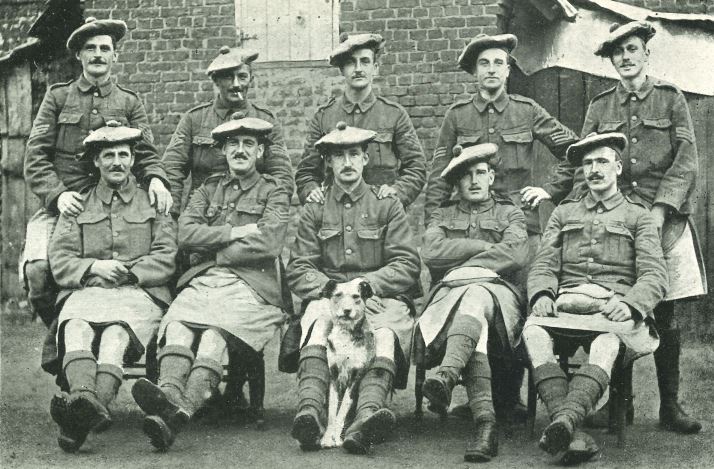
It’s also important to note that many of our female former pupils made significant contributions to the war effort. Catherine Roy CBE began her nursing career in France during the first year of WW1 and was appointed as the prestigious Matron-in-Chief of the Queen Alexandra’s Imperial Military Nursing Services in the 1940s. Click here and navigate to page 50 to read Catherine’s story.
Additionally, Mary Sherrard MBE, worked as a codebreaker at Bletchley Park during the Second World War. She was one of many women who worked diligently to decrypt Germany’s infamous Enigma code. Read more about Mary in March’s instalment of HSOG History by clicking here.
Remembering those who fell
Even though it has been more than 110 years since the commencement of the First World War and 85 years since the start of the Second World War, those who gave their lives so valiantly are remembered and honoured by our two War Memorials, which are currently housed at our Senior School campus at Old Anniesland.
In total, 2,706 former pupils served during the First World War, with 478 losing their lives. Their names are commemorated in the School’s Book of Remembrance, which was edited by Frank Beaumont, former Senior English Master at the boys’ school.
By June 1920, the Town Council agreed to the construction of a School War Memorial and a committee was subsequently set up to manage it. It was thought the work should be entrusted to a former pupil if possible. Eventually, William Wright was selected as the architect for the project.
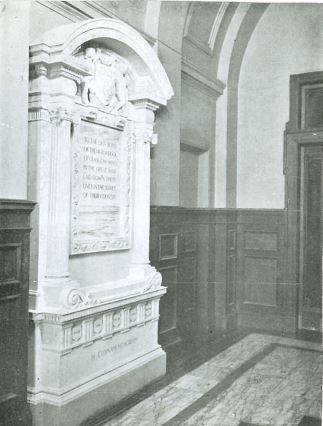
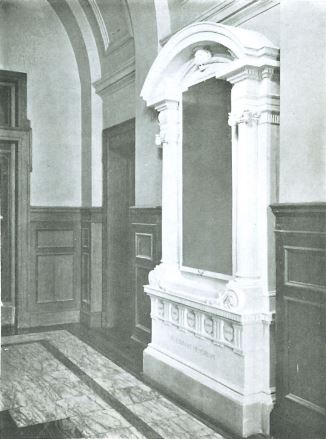
Pictured above: The panel bearing a dedicatory inscription on the War Memorial (left) and another panel detailing the names of those who gave their lives during WW1 (right), installed at Elmbank Street on 14th February 1922.
The Memorial consisted of two sections, the first contained a dedicatory inscription on a marble panel and the second detailed the names of those who had fallen during service. It was formally unveiled by former pupil the Rt. Hon. Andrew Bonar Law on 14th February 1922.
Come March 1924, another 14 acres of playing fields had been purchased at Old Anniesland and plans were drawn up to erect a Memorial Clubhouse and Pavilion, which was officially opened just over three-and-a-half years later, on 1st October 1927. The opening ceremony was performed by General Sir Ian Hamilton.
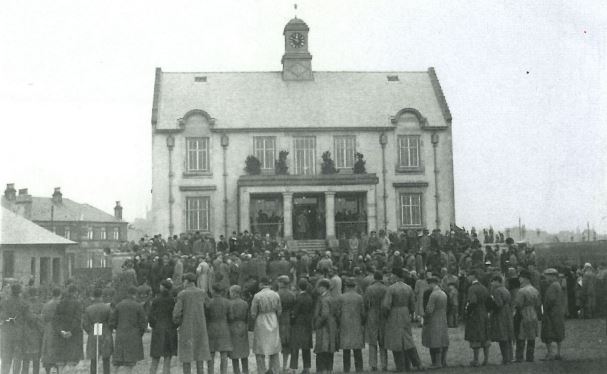
Following the conclusion of the Second World War, which saw 1,563 former pupils serve their country, a Book of Service and Remembrance was published in 1948 detailing the 147 individuals who gave their lives.
A rededication service of the War Memorial took place at Elmbank Street in 1959, which saw their names added to the existing War Memorial. Mrs Talman, wife of former Rector John Talman, was granted the honour of unveiling the new memorial plaque.
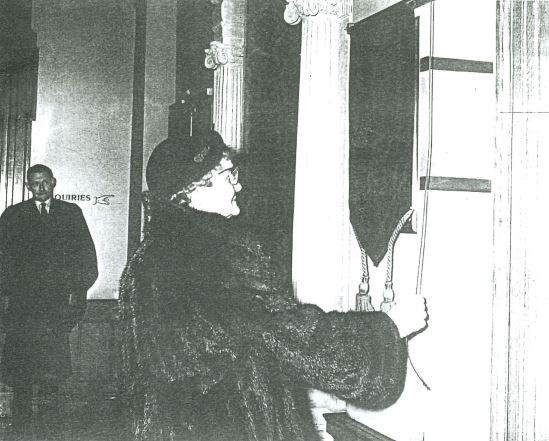
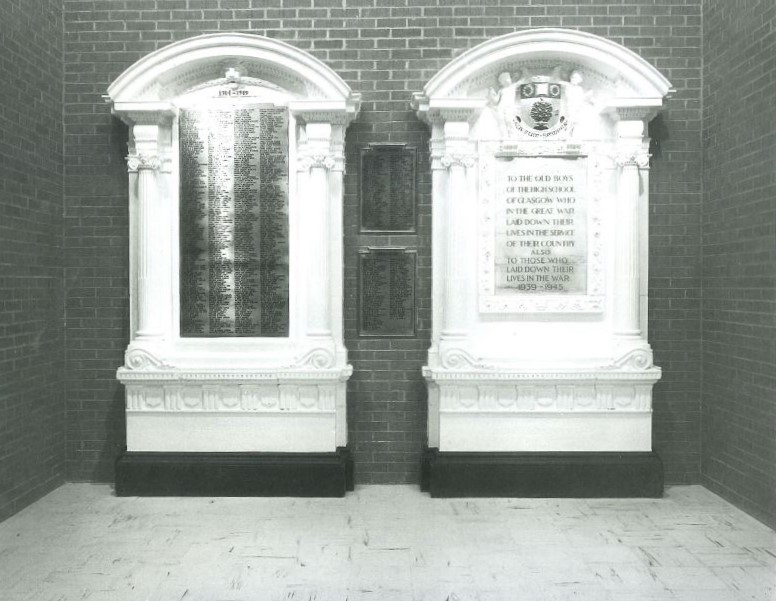
Pictured above left: Unveiling of the new plaque added to the War Memorial to commemorate those who gave their lives during WW2. Here, the plaque is pictured being unveiled in 1959 by Mrs Talman, wife of former Rector Mr John Talman.
Pictured above right: The War Memorials as they remain today, situated in the hallway outside the Senior School Assembly Hall at Old Anniesland (date unknown).
Our Annual Remembrance Service takes place in our Senior School Assembly Hall each November. This year it was held on Friday 8th November. It’s an opportunity for our pupils, staff and wider school community to come together to commemorate those who made the greatest sacrifice and who made our today possible.
Much of the information included within this article was sourced from The Town School, a book written by former staff member, Brian Lockhart. Should you wish to read more about The High School of Glasgow’s history you can order a copy of the book here: www.hsogcommunity.co.uk/shop/.
Additional source material was gathered from our History department, old school magazines and The High School of Glasgow Scrapbook by Louis De Banzie.

